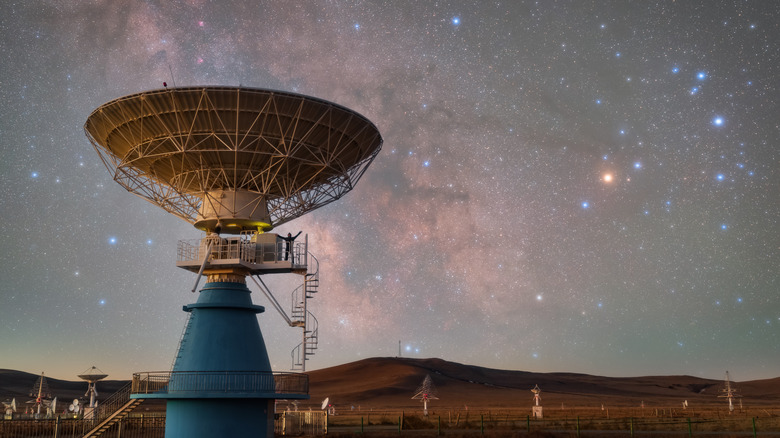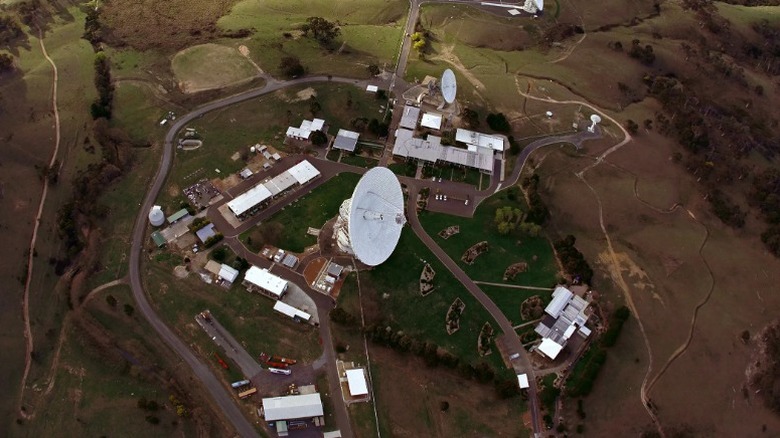Crucial NASA Antenna Damaged With No Timeline For Repairs
When the general public thinks about NASA, they likely think about space shuttles, rockets, satellites, and the International Space Station in Earth's lower orbit. Despite NASA's future without the ISS, it still needs to communicate with people and equipment it sends to space, and the agency relies on antennas on the ground to do so.
However, one of NASA's largest antennas – dubbed the Mars Antenna since 1966, but officially designated the DSS-14 — in its Goldstone, California, Deep Space Network (DSN) suffered significant damage when it over-rotated in September 2025. According to SpaceNews, NASA's Jet Propulsion Laboratory (JPL) said this caused "stress on the cabling and piping in the center of the structure," and that "hoses from the antenna's fire suppression system also were damaged, resulting in flooding that was quickly mitigated."
The United States government's shutdown on October 1, 2025, has made it difficult for engineers and administrators at JPL to coordinate with NASA to get DSS-14 up and running. Unfortunately, as of this writing, the antenna is still out of commission, and neither JPL nor NASA knows when it will be back in working order. DSS-14 being down could pose a problem for next year's 10-day Artemis II mission, as the previous Artemis mission that orbited the moon relied on a DSN for support.
What is a Deep Space Network?
NASA operates three DSN facilities around the world. One is in Goldstone, California — where DSS-14 is located — another in Madrid, Spain, and one near Canberra, Australia. The position of each of these facilities is roughly 120 degrees apart in longitude, allowing the space agency to maintain constant contact with any spacecraft it needs to, no matter the time of day or where a spacecraft is located.
Each facility has giant radio antennas of varying sizes. There are 112-foot (34-meter) antennas, which come in two types. One is a high-efficiency type, while the other is a beam waveguide antenna. The beam waveguide type is a little different in that it has more sensors than the high-efficiency kind, and instead of being at the center of the antenna, they're underground in a climate-controlled room. This makes it easier for engineers to modify the equipment when JPL or NASA develops new, innovative technologies.
There are also the monstrous 230-foot (70-meter) antennas — the size of DSS-14 — which each DSN facility has one of. These antennas are capable of tracking objects billions of miles from space. DSS-14 was the first of its kind.
Why the Mars Antenna being down is a big deal
Sure, the Mars Antenna might be primarily used to track and communicate with spacecraft billions of miles away from Earth, but it's still a necessary component for all other missions. In 2022, Artemis I received over 900 hours of support from the DSN when each antenna was fully functioning, and even during that mission, there was a loss of in-flight communication. That blackout underscored the strain put on the system caused by necessary maintenance being pushed back repeatedly and outdated hardware (some that could still be there from 1963) not receiving updates.
The Office of Inspector General audited NASA in 2023 and found: "NASA's DSN is currently oversubscribed and will continue to be overburdened by the demands created by an increasing number of deep space missions, including crewed and robotic missions." The amount of data from all the missions has exceeded 40% of what the system should be able to handle at times.
Without the Deep Space Network, NASA's satellite missions to Mercury and Venus might not have been possible, and when one of the antennas is out of commission, it adds stress to the entire system. Luckily, NASA's JPL is adding six new antennas to its DSN through its Deep Space Network Aperture Enhancement Program, which should relieve some of the pressure.


